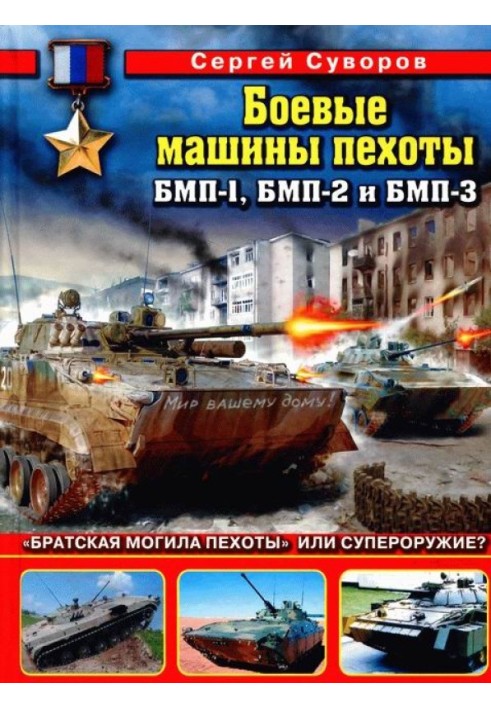BMP-1, BMP-2 and BMP-3 infantry fighting vehicles: “Mass grave of infantry” or superweapon
 Instant download
Instant download
after payment (24/7)
 Wide range of formats
Wide range of formats
(for all gadgets)
 Full book
Full book
(including for Apple and Android)
These combat vehicles made a real revolution in military affairs, forever changing the face of modern warfare. The primacy in their development belongs to the Soviet Union, and infantry fighting vehicles owe their birth to weapons of mass destruction - already in the 1950s it became obvious that in the conditions of a nuclear war, infantry would not be able to operate in areas contaminated by radioactive fallout without reliable protection, which means it vitally needs light , a massive, fully enclosed, high-cross-country combat vehicle that protects not only from bullets and shrapnel, but also from the damaging factors of a nuclear explosion, allowing motorized rifle units to overcome water obstacles and high-radiation zones together with tanks. Created in the mid-1960s. The BMP-1 met all these requirements, opening a new page in the history of armored vehicles and radically changing the tactics of maneuverable combat. The West had to act as a catch-up, hastily developing its own versions of such machines. But the Soviet military industry did not stand still - in 1981, the modernized BMP-2 with a 30-mm automatic cannon and a guided weapon system was adopted, and six years later - the fundamentally new BMP-3, which surpassed all competitors in armor protection and mobility and firepower (twin 100-mm and 30-mm cannons). A new book by a leading domestic specialist restores the true history of the creation, improvement and combat use of infantry fighting vehicles, without which it is no longer possible to imagine modern war.
Data sheet
- Name of the Author
- Сергей Суворов Викторович
- Language
- Russian












